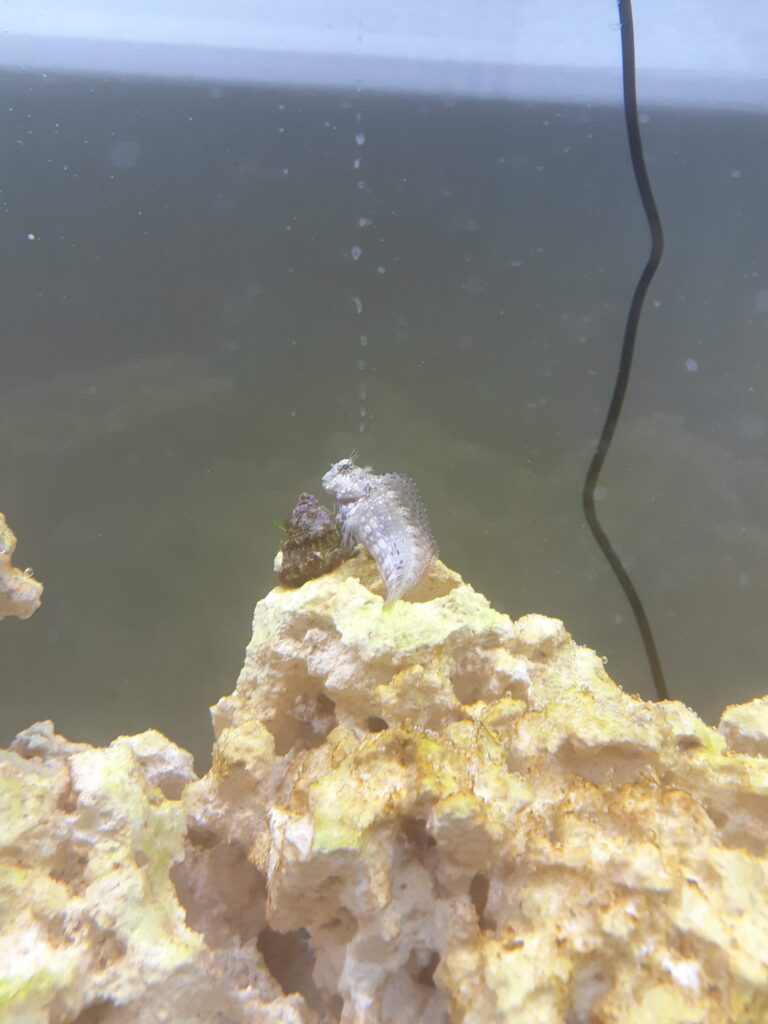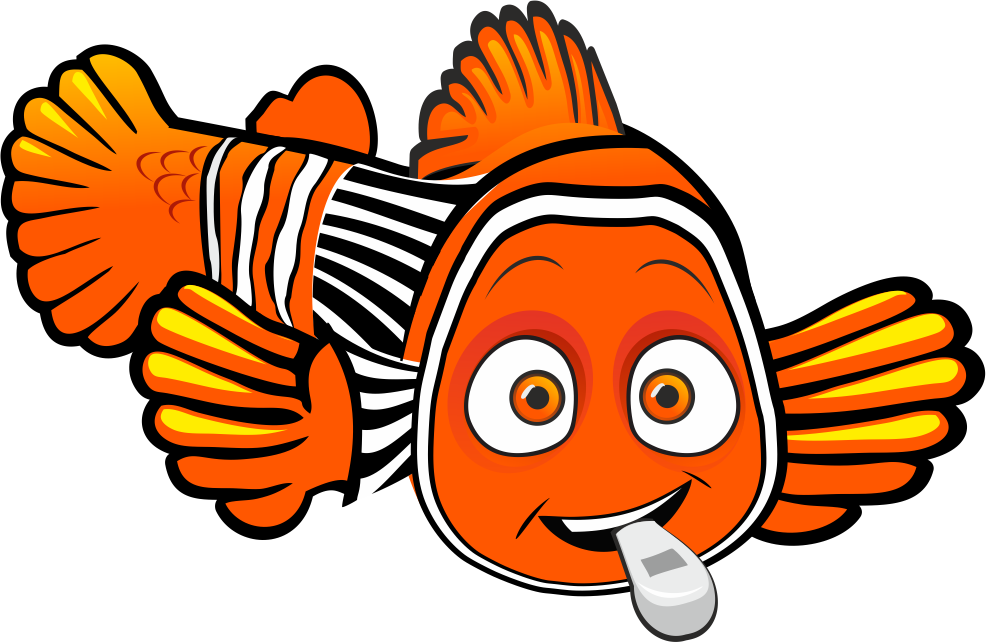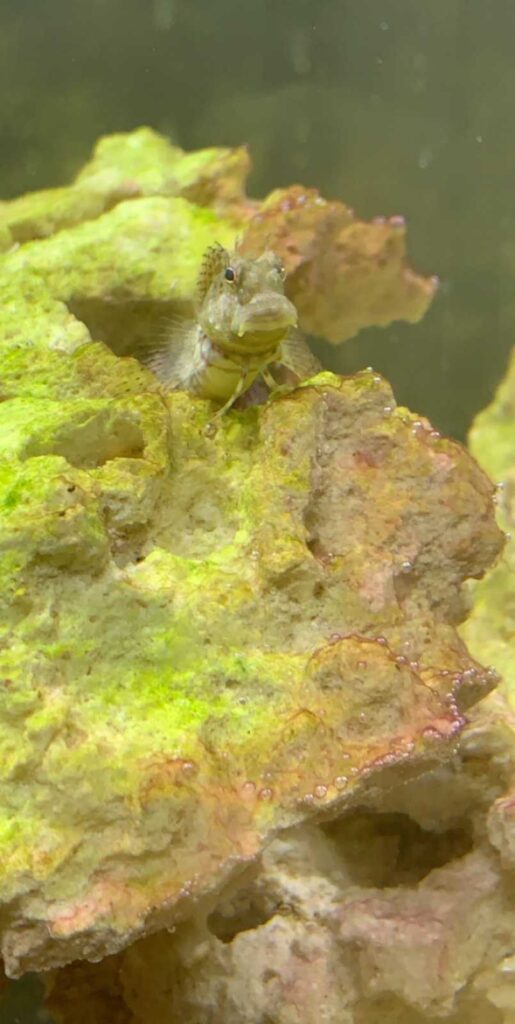Basic Facts About Blennies

| Scientific Family: | Blenniiformes |
| Number of Blenny Species Types: | There are over 900 species types of Blennies. |
| Average Life Span: | Blennies can live between 1 and 10 years, depending on the species. An average lifespan in captivity is likely 3 to 5 years. |
| Typical Size: | Size of Blennies will also depend on the species. Most are around 3 in long. Some will be smaller, and some will get up to 5+ inches. |
| Colors: | Depending on the type of Blenny, you can find almost every color combination for your choosing. Blennies will also have different patterns, like stripes and dots. They are quite unique. |
| Native To: | Blennies can be both saltwater and freshwater fish, though most are saltwater. Saltwater Blennies are found all over he world, but if you get one for your aqaurium, it likely came from he Indo-Pacific region. |
| Water Conditions Needed: | Temperature: 72-82°F PH Level: 7.8-8.4 Gravity: 1.002 and 1.025 |
| What Do Blennies Eat?: | Blennies eat pretty much anything, including the algae in your tank. Prepared favorites include live and frozen brine shrimp or mysis shrimp. You can also feed them pellets and flakes. |
| Fish-Keeping Experience Level: | Beginner – Blennies are hardy fish that are relatively simple to care for. |
| Minimum Tank Size: | This really does vary by species type of Blenny, but minimum tank size should be at least 10 gallons. Our Ohfishal recommendation is a 30 gallon minimum tank size. |
| Tank Accessory Requirements: | Heater and Filter. Protein Skimmers are recommended for saltwater tanks. |
| Compatibility – Other Fish: | These are compatible with almost all other saltwater fish other than the ones found below. You will only want to have one Blenny in many cases. |
| Compatibility – Plants: | Various types of Hard and Soft Corals. Blennies really like live rock to hide around in and sit on. |
| Compatibility – Do not Keep Blennies With These Species: | Do not pair Blennies with similar species of Blennies. Other fish species you should avoid include groupers, dottybacks, lion fish, eels, sharks, rays triggerfishes, or certain aggressive angelfishes. |
| Can you breed them? | Yes, you can breed Blennies. |
| Fun Fact: | Two fun facts for you! There is one type of Blenny that is venomous, the Meiacanthus. The Meiacanthus Blenny can inject venom from its hollow fangs. Their venom contains an opioid-like protein which they use to defend themselves. Another type of Blenny, the Viviparous Blenny is the only fish known to suckle its offspring. They do this much like a human will breast feed, where each young attaches its mouth to the opening of a canal inside the mother, which dispenses food! |
| Cost: | $10-$70 Depending on the type of bleny you’d like, prices will range and some species are rarer than others. |

How will a Blennies behave in your aquarium?
Blennies are very peaceful towards other species. As a rule, they may not be as friendly to their own species, so if you want to keep multiple blennies, make sure you have a bigger aquarium with space for all of them. The Blennies will hang out within your rocks or on the bottom of your aquarium. For example, our Lawnmower Blenny is like a chameleon, and we play a game called “Find Rocky” with our two year old because he will blend in with the rocks. Ordinarily they aren’t jumpers, but they will glide through the water like eels. By the way, when our Lawnmower Blenny goes at the algae, he legitimately looks like a woodpecker chomping up and down.
How to acclimate your Blenny Fish to your fish tank?
After you get your Blenny, there are a few ways you can introduce your new prized possession to your aquarium. Next, we’ll walk you through one of the easier ways, the Floating Method, but know that there are other ways you can do this as well. Lastly, the main thing we advise is to have the lights turned off, and if you have more aggressive fish, introduce the blennies when the other fish are sleeping.
Floating Method:
- To begin with, turn off all lights on your aquarium and dim the lights in the room. Remember, if shipped, your Blenny has likely been shipped in a dark box, so we don’t want to cause them to freak out by flooding them with lights. Also, if you got him from the store, he/she just rode home in a dark bag, so same rules apply.
- Place the bag with the Blenny in it in your aquarium and let it float. Don’t open the bag yet. Let the bag float for about 15 minutes. Doing this will let the temperature of the water in the bag to match the temperature of the water in your aquarium.
- Once you’ve had the bag in the water for 15 minutes, cut a small hole in the bag (if there’s a metal clip, cut the hole right below the metal clip). Open the hole wide enough, and then pour in 1/2 a cup of your aquarium water to the bag. Continue to add 1/2 cup of aquarium water every four minutes until the bag is full.
- Once the bag is full, take the bag and pour out half of the water (not into your aquarium). Repeat step 3 again. This time, when the bag is full, you’ll net your Blenny and put it into your fish tank! Make sure to remove the shipping bag from your aquarium, and again, don’t pour the water from the bag into the aquarium but discard of it elsewhere (like your sink).

Most Popular Types of Blennies
- Lawnmower Blenny
- Bicolor Blenny
- Golden/Midas Blenny
- Redlip Blenny
- Starry Blenny
Which Species Are Best To Pair With Your Blennies?
- Any passive to semi-aggressive Saltwater Fish
Ohfishal Blenny Fish Tank Set Up
This is our ultimate checklist for a fish tank with a Blenny. Of course, you can do this with less parts or with different parts, this is our all-in ohfishal recommendation. This set-up will run you around $330 (market prices will vary).
- Fish Tank, Filter, and LED Light – 30 Gallon Fish Tank – $120
- Species – 1 Lawnmower Blenny ($25), 1 Goby ($10), 1 Clownfish ($30), 1 Wrasse ($30), 30 lbs of Dead Rock ($90), 1 bottle bacteria ($25)
- Heater – $12
If you are starting your aquarium from scratch, please take it slowly. We recommend starting with the Dead Rock first with the Bacteria (for about a week or 2), and then add in your Clownfish or Wrasse. After about 2 weeks, you should be able to add in your Blenny and Goby. Then, after another 2 weeks you could add in the Clownfish or Wrasse (Whichever one you didn’t put in first). Make sure you are frequently testing your water conditions to ensure that ammonia and nitrate levels aren’t spiking. The slower you take it, the less likely you are to lose any fish or other species!
Frequently Asked Questions about Blenny Fish
How big do Blennies get?
Typically, different types of Blennies will be different sizes, but most Blennies will be between 3 to 5 inches full grown.
Do Blennies eat algae?
Yes, these are one of the reasons that a Blenny is a great addition to a new fish tank set up. They will help keep the aquarium algae free.
How long will my Blenny live?
Most Blennies will live between 3 to 5 years, but some have been known to live up to 10 years in captivity.
